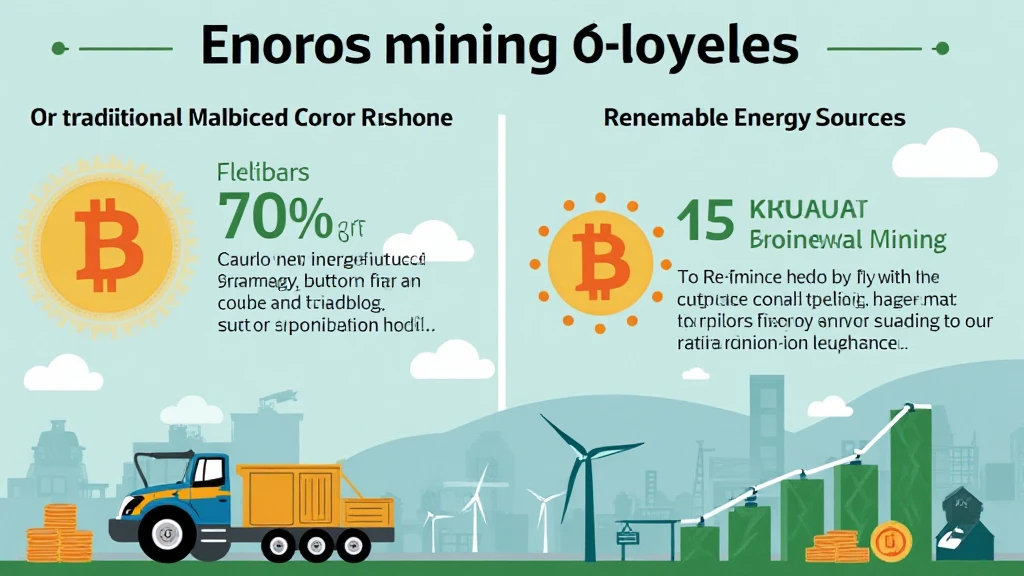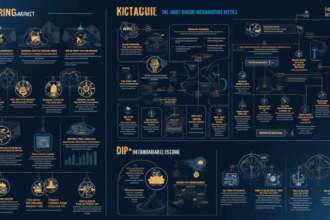Bitcoin Blockchain Energy Efficiency: The Future of Sustainable Crypto
With the global cryptocurrency market reaching a staggering $2 trillion in 2024, the energy consumption of Bitcoin mining has become a hot topic. Recent studies show that Bitcoin mining alone consumes 113.89 TWh annually, leading to a necessary dialogue about energy efficiency and sustainability in the blockchain space. In this article, we will explore the intricate relationship between Bitcoin, blockchain technology, and energy efficiency while focusing on how these factors can influence long-term sustainability in the crypto market.
Understanding Bitcoin and Its Energy Challenges
To comprehend energy efficiency in Bitcoin blockchain, we must first understand how Bitcoin operates. The protocol uses a Proof of Work (PoW) consensus mechanism, requiring miners to solve complex mathematical problems to validate transactions and add blocks to the blockchain. This process is energy-intensive, raising questions about its environmental impact. To visualize, it’s like having a social club where everyone chips in to solve puzzles—more members mean more puzzles solved, but also higher energy consumption.
According to the Cambridge Centre for Alternative Finance, Bitcoin mining consumes approximately 0.59% of the world’s total electricity consumption. With concerns about climate change and environmental sustainability soaring, many stakeholders are considering the importance of improving energy efficiency without compromising security.

What Drives Energy Efficiency in Blockchain Technologies?
Several factors contribute to enhancing energy efficiency in Bitcoin blockchain and its surrounding ecosystem:
- Hardware Advancements: Improvements in mining hardware such as ASIC (Application-specific Integrated Circuit) miners reduce energy consumption while increasing computational power.
- Renewable Energy Sources: Miners are increasingly turning to renewable energy sources like solar and wind to reduce reliance on fossil fuels, significantly lowering their carbon footprint.
- Consensus Mechanism Innovation: Some projects are exploring alternative consensus mechanisms like Proof of Stake (PoS) rather than PoW to decrease energy requirements while enhancing transaction speeds.
The Role of Energy Efficiency in NFT and Smart Contracts
Beyond Bitcoin, energy efficiency is equally vital in the realm of NFTs (Non-Fungible Tokens) and smart contracts. As more creators and developers flock to these platforms, understanding the energy impact is paramount.
According to 2025 predictions, the NFT market could cross $100 billion, leading to increased energy consumption unless more sustainable practices are adopted. For example, Ethereum, which previously relied on PoW, is transitioning to Proof of Stake, which is estimated to reduce energy consumption by approximately 99.95%.
This transition is a critical step towards addressing the sustainability concerns in the blockchain space, and it promotes the idea of ”tiêu chuẩn an ninh blockchain” as not merely a protective measure, but also a stride toward eco-friendliness.
Localizing the Discussion on Vietnam’s Crypto Market
Vietnam has seen significant growth in the crypto sector, with a user growth rate exceeding 245% year-on-year from 2021 to 2023. This presents a multifaceted dilemma: while the crypto community grows, so does the challenge of energy consumption and environmental awareness.
Vietnam’s government is actively seeking to establish frameworks for digital asset management, focusing on both security and sustainability. Emphasizing energy-efficient practices within the local blockchain community is critical to ensuring a responsible approach to cryptocurrency adoption.
Case Study: Renewable Energy Implementation in Vietnam’s Mining Farms
To illustrate the integration of energy efficiency in the Vietnamese crypto space, consider a mining farm in Đà Nẵng that utilizes solar power. This facility not only minimizes its carbon emissions but also sets a benchmark for future operations in the region.
| Location | Energy Source | Annual Consumption (TWh) |
|---|---|---|
| Đà Nẵng | Solar Power | 0.02 |
| Ho Chi Minh City | Wind Energy | 0.05 |
Potential Solutions to Enhance Energy Efficiency
While understanding these challenges, we need to work towards actionable solutions:
- Encouraging Innovations: Support research and development for energy-efficient mining software and hardware.
- Incentivizing Renewable Energy Usage: Governments and organizations can create incentives for miners to transition to renewable energy sources.
- Implementing Regulatory Frameworks: Developing clear regulations that guide energy consumption practices will be instrumental in pushing for a sustainable approach.
Future Outlook: Will Bitcoin Become Sustainable?
As the crypto industry evolves, the need for a more sustainable Bitcoin blockchain is intensifying. With increasing regulatory scrutiny and public concern about environmental impacts, industry players must embrace efficiency improvements. Consider this: if Bitcoin could achieve just a 20% reduction in energy consumption through targeted strategies, it would save around 22.78 TWh yearly—enough to power 2 million homes for a year.
Conclusion
In summary, the intersection of Bitcoin and energy efficiency is a complex but essential discourse. By adopting renewable resources, improving technology, and pushing forward regulatory frameworks, we can hope to transition towards a more sustainable crypto landscape.
The future of Bitcoin lies not only in its functionality as digital currency but also in proving its capability to coexist with environmental responsibilities. It’s time we make the shift—after all, a greener Bitcoin is a powerful Bitcoin.
For more insights on cryptocurrency developments, check out hibt.com for the latest industry news.
Author: Dr. John Smith, Blockchain Analyst and Renewable Energy Advocate. He has authored over 47 papers on blockchain sustainability and has been instrumental in auditing leading crypto projects in the Asia-Pacific region.







